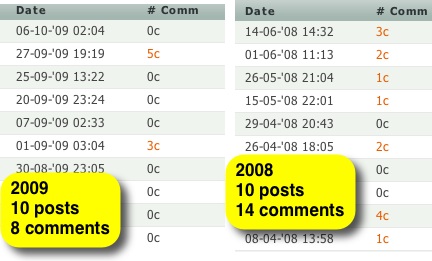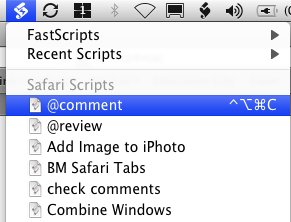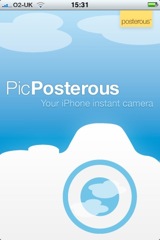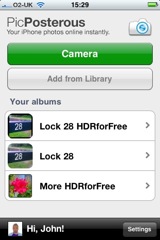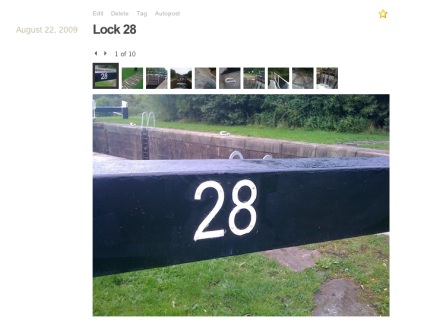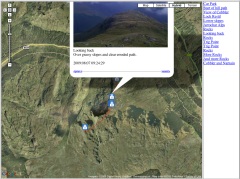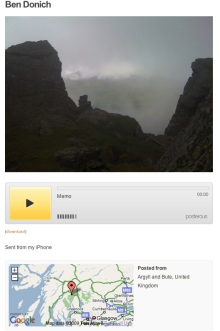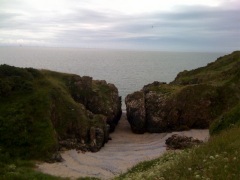
Yesterday saw the launch of blogs in Glow. A much requested feature from the beginning it is great to see Glow getting into a web 2 world at last. To set up your blog you need to have creating a blog allowed by your ASM, after that you just add a Blog webpart to a glow page and click create. You can create a private blog, one that can only be viewed by glow users and an open blog, I know which one I’d go for![]()
Alan Hamilton has published a table explaining how glow users roles map to the blog’s role: Glow Blogs | #learnerham. I think I’d go for giving any pupils as much permission as I could. At Sandaig Primary the children always blogged with admin rights and they never put a foot wrong.
Yesterday I set up a quick test blog just to see how thing work, I managed to get in first and spent a while trying things out. It is, on first impression, a pretty standard WordPress set up and I managed to change my theme, add stuff to the sidebar and make a couple of posts. I had a bit of trouble posting an image as there seems to be a wee bug in the system, I’d guess this will be easy to fix.
The blog both integrates into glow, with a version (without media) of the Quick Press area in the glow webpart:
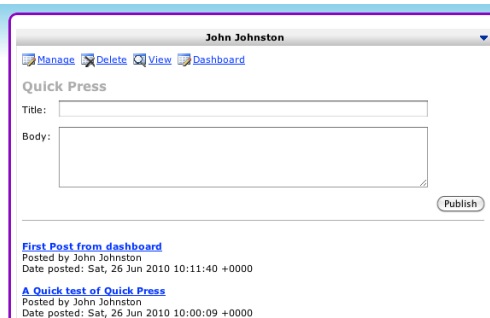
this could be handy if you wanted a text only blog, but I am more interested in the fact that with a public blog you can log into the blog admin directly using your glow login through the magic of Shibboleth.
Feature Requests I’ll be making
To celebrate day two of glow blogging I though I’d make a couple of feature requests.
- Storage space; at the moment this is set to 10mb:

Two header graphics and a couple of other small pics and I am at 3% of this already. My graphics are fairly well squashed (unlike some who should know better ), 10mb gives very little space for audio or video files. I’ve not tested the upload file size limit. I know Glow has been very good at increasing storage space for standard glow sites when it is needed and hope they will take the same approach here.
), 10mb gives very little space for audio or video files. I’ve not tested the upload file size limit. I know Glow has been very good at increasing storage space for standard glow sites when it is needed and hope they will take the same approach here. - Settings, not too surprising but you can’t do a lot with these, the one thing I would love to see turned on is the ability to activate the MetaWebLogAPI, this would enable lots of good stuff, the use of specialised blogging clients and, more interesting to me, blogging from mobile devices (ipod touches for instance).
I’ll not be lobbying for lots of extra themes, though other folk might, the one I’m using, K2, has a fair amount of customisation available and I don’t think the limited number of theme is that important.
Getting started blogging
Especially if done in full public view there are some potential difficulties. I personally feel that the advantages hugely outweigh these, but I also feel it pays to tread carefully. I always used to repeatedly stress to my pupils there responsibilities in publishing to the world. I likened it to a school trip, explaining that blogging was like going out into the world as a school representative. In the same way as I expected excellent behaviour on a trip I expected excellent behaviour on the blog.
Teachers too have their responsibilities, we need to try to get he best out of blogging, introducing it in a structured way. Three years ago I blogged: Starting Blogging in the Classroom and think that is still a reasonable approach.
Ever since I started pupils blogging I have felt that it is a wonderful classroom activity and I hope that the glow blogs will lead to an explosion of classroom blogging across Scotland.
I am also hoping that these blogs will be listed on ScotEduBlogs making that an even more powerful resource.


